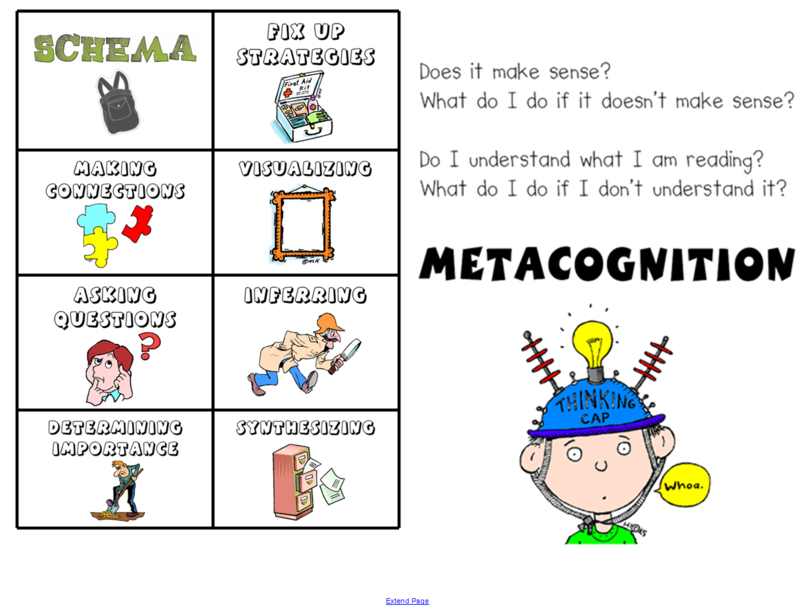e-Learning Ecologies MOOC’s Updates
THINKING NOTES: A METACOGNITIVE STRATEGY FOR ENHANCING STUDENTS' READING SKILLS (optional update #6 - Ayers)
Drs. Cope and Kalantzis (2017) presented the class with the definition of metacognition "thinking about thinking" and described metacognitive moments as "reflecting on the concepts you are developing; doing epistemology while doing the subject." Flavell (1976), who coined the term metacognition defined it as "one's knowledge concerning one's own cognitive processes and outcomes or anything related to them." Cope and Kalntzis (2017) explained that metacognition is a vital skill for 21st century students in that it allows them to think in powerful ways about their future lives.
Schmitt and Newby (1986) posited that "instruction can be enhanced through the incorporation of metacognitive aspects in the instruction and [that] the resultant effects on the learner should be positive in terms of motivation and overall performance." Imagine how much more motivated a student is to learn when s/he feels engaged in the learning process and that s/he truly understands what his/her learning style.
According to Pappas (2015), an empowered learner is a successful learner and "one of the most effective ways to empower your online learners is to incorporate metacognition into your eLearning strategy." To that end, he offered 5 tips for enhancing metacognition:
(1) Integrate a wide range of skills and subjects. Allow eLearning activities to reflect the real world that learners live in which will allow them to "fine tune their metacognitive talents by completing diverse learning tasks."
(2) Model the metacognitive process. Demonstrate what you want learners to know and then guide them through your problem solving process with as much detail as possible.
(3) Give them (students) control. Grant students as much freedom of choice as possible.
(4) Review, identify and evaluate. Invite students to assess the eLearning activity including their own "strengths and weaknesses throughout the task."
(5) Encourage learners to differentiate what they know from what they need to know. The main objective is to help students identify and fill their learning gaps.
Listen as Erica Soriano describes "Thinking Notes" which can take place in a traditional text to facility greater literacy in the current context and in the future. This technique can also be adapted easily to an on-line environment. This methodology also has utility for other disciplines as well.
References:
Pappas, C. (2015). 5 instructional design tips to enhance metacognition in eLearning. ELearning industry - https://elearningindustry.com/5-instructional-design-tips-to-enhance-metacognition-in-elearning
Flavell, J. H. (1979). Metacognition and cognitive monitoring: A new area of cognitive-developmental inquiry. American Psychologist, 34, 906-911.
Flavell, J. H. (1987). Speculation about the nature and development of metacognition. In: F. E. Wernert and R. H. Kluwe (Eds.), Metacognition, Motivation and Understanding. Hillsdale, NJ: Lawrence Erlbaum Associates.
Schmitt, M.C. and Newby, T.J. (1986). Metacognition: Relevance to instructional design. Journal of instructional development, 9, 4, 29-33.



Thanks, Anuj!
Impact full write up with nice research and references. Quite useful.